At Ease
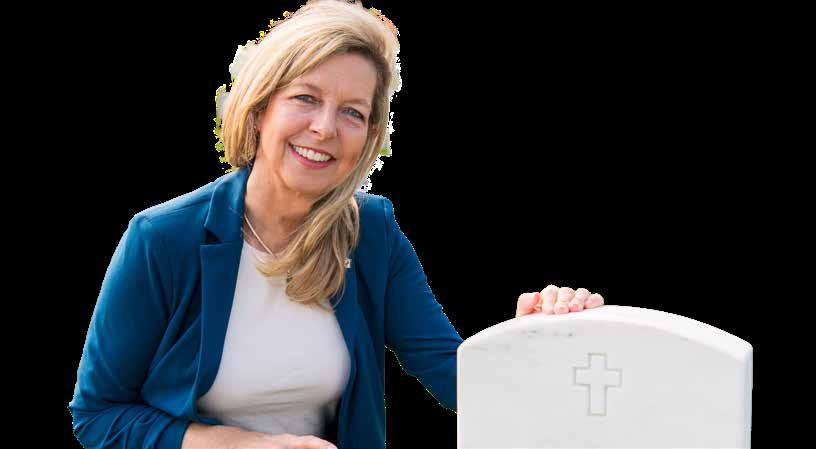
Honoring the fallen this Memorial Day
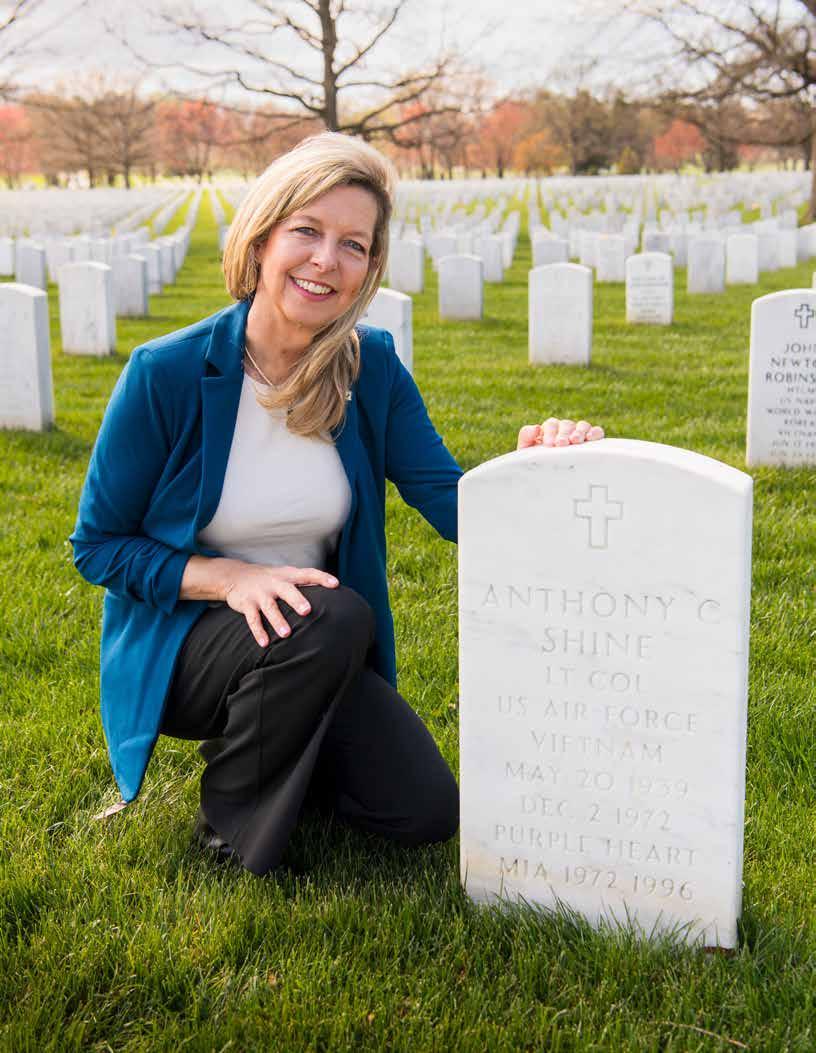











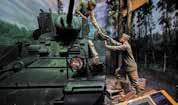

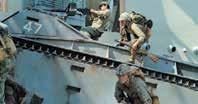
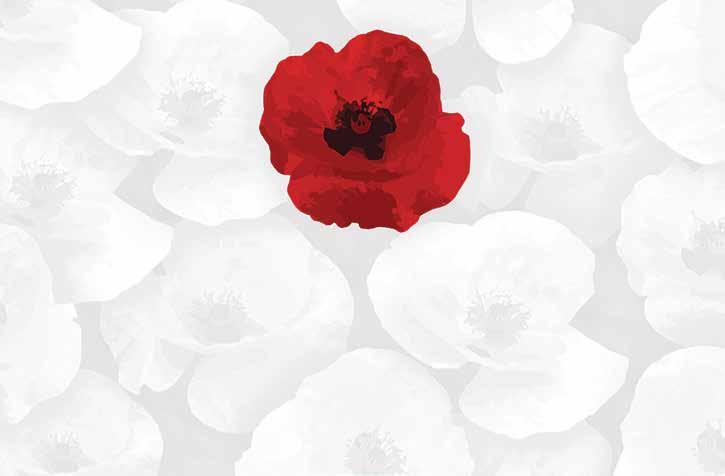




Executive Editor of At Ease
Eli Wohlenhaus
Interact with At Ease on our social media platforms:
Facebook @ At Ease Monthly Facebook @ DC Military Instagram @ ateasemonthly



Honoring the fallen this Memorial Day




















Executive Editor of At Ease
Eli Wohlenhaus
Interact with At Ease on our social media platforms:
Facebook @ At Ease Monthly Facebook @ DC Military Instagram @ ateasemonthly

I am so proud of this edition. I would probably always write that, but this one feels very special. Each May, we try to center several of our stories around Memorial Day, and what better way to recognize it than by having our cover take place in Arlington National Cemetery?
The story that accompanies the cover is a particularly moving one. So many went missing in action during the Vietnam War, and for some families who feared the worst or lived without resolution for so long, being able to find the remains of their loved one to bring home to lay to rest.
We’re also getting to that time of year where it’s time to hit the outdoors (if your allergies can handle it) and enjoy spring. One way people do this is to hit local wineries and breweries, but we have a story about a winery that includes a fun twist. It takes “wine walk” to a new level.
Stay tuned to At Ease because we have something very special planned next month in honor of the 80th anniversary of D-Day. You can go to our website, dcmilitary.com, for a sneak preview of what is to come.





Wine lovers have come to appreciate the bountiful pleasures awaiting them at Layton’s Chance Vineyard and Winery, nestled in the scenic Vienna countryside.
But lately guests have also been pleasantly surprised to discover the added joys of exploring the Layton’s Chance Nature Trail located around the popular full-time vineyard’s perimeter.

Originally laid out by owner/winemaker William Layton as a personal therapeutic and recreational running path several years ago, he’s now enjoying sharing it with fellow runners, walkers, bike riders, Loki, his friendly resident “Wine Dog,” and anyone else wishing to unwind or be energized by drinking in the sweet sights, sounds and smells.
Explorers have their choice of short (.57 miles) or long (1.77 miles) trails bordering the 14 acres of vineyards, 144 acres of farmland, and 102 acres of woodland, all across flat terrain no more than 8 feet above sea level.
The opportunity to stretch one’s legs and view fresh vistas along the trails has proven to be especially welcomed by the growing numbers of RV travelers extending their Layton’s visit overnight.
Along with his ongoing hands-on efforts caring for and keeping up with the winery’s well manicured vineyard areas, Layton seems to thrive on making the nature trails as interesting and informative as possible, gleaning tips and repurposed signage from nearby Blackwater National Wildlife Refuge.
He’s also created a helpful trail guide handout, sharing the Layton family’s amazing backstory of transitioning from farm to vineyard, a trail map, plus photos and fun facts about ten landmarks to be aware of, concluding with a brief, common sense listing of nature trail rules to follow.

Mistletoe: Yes, the iconic Christmas kissing plant actually grows as a parasite in trees, especially in lowlying areas like Layton’s. The good news for winter wine and nature lovers is that its distinctive green clumps are most readily visible when trees are bare.
Bird Laser: No, the green dot you spot moving around the ground and vineyard isn’t a UFO. It’s a non-harmful way to keep feathered foragers from flocking to Laytons to gobble down the sweet fruit, especially in August. It’s also far less time and labor intensive than traditional netting.
“Birds are actually our biggest problem in the vineyard,” Layton said, adding that the feathered flyers once actually consumed seven tons’ worth of grapes in seven days.

Non-Tidal Wetlands: High water areas may be visible when looking into the wooded areas. The water is undoubtedly rising, a harbinger of the harrowing prospect facing Dorchester County, which is estimated to lose between 9,000 and 39,000 land acres to the scourge of sea level rise.
Mushrooms: Among the array of new things Layton’s loves to tackle is growing mushrooms in a clearing along the trail. Just in the beginning stages, the starter set is atop a construction of logs, ready to eventually sprout in the wet, shady spot.
Wildlife: Delmarva Fox Squirrels, Sika Deer, Bald Eagles, Snapping Turtles and Wild Turkeys are among the menagerie.

There’s also a beehive, pollinator plot and a beloved family fishing pond, a leftover water feature dug during the 1950s for irrigation and to quench the thirst of Layton’s dad Joe’s herd of 80 beef cattle. The catfish, sunfish, bluegill and bass have lately become favorite meals of invasive snakeheads, Layton noted, but geese, ducks and heron can still be seen.
One impressive underground feature is the Joe’s Clean Water Bioreactor, an environmentally friendly method of cleaning farm field water overflow to prevent the runoff from reaching rivers and the Chesapeake Bay.
The original pathway leading to Layton’s Chance Vineyard and Winery’s success story, currently bearing fruit, was blazed in the wake of a detour.
William Layton had been raised on the farm where his family had lived and worked for four generations — his Dorchester County farming roots date back 314 years.
But back when he dutifully helped his dad Joe raise corn and soybeans on the relatively small acreage, young William didn’t have much time to just enjoy the jewel of a landscape surrounding him each day.

“I was always too busy to really stop and notice how richly serene it all was,” Layton recalled.
Wanting to experience more, he eagerly left the farm behind for a time,seeking his own greener pastures elsewhere, a journey which led him to college and a job with Toyota, which offered a taste of urban life across the country.
He met and married Pittsburgh-born wife Jennifer and became a dad himself, to daughter Allison and son Stephen. At that juncture, Layton began looking homeward once more, deciding the farm was where he wanted to raise his own family.
Now, William not only gets to savor the sweet landscape on a daily basis, he has the added reward of watching his 76-year-old dad slow down just enough to enjoy a glass of wine and a book from time to time, when he himself isn’t picking grapes.
For more information, visit in person at 4225 New Bridge Road, Vienna, MD, call 410-228-1205, or check their website at https://www.laytonschance.com.





18548 Harmony Church Road (aka VA-704), Hamilton VA 20158 3creekswinery.com
Thursday-Monday 1100-1730* 540-369-4655
Named after the three creeks on the 28-acre property, Three Creeks Winery is a Virginia farm winery specializing in French-style wines made from the estate as well as other Virginia-sourced fruit. Owned by West Point grad (A-2 USMA ’76) John Lawrence, and his wife P-J, the property was purchased in October 2017.
The now 10-acre vineyard was first

laid out in the 2017-18 winter, with first vines in the ground March 2018. Modification of the 100+ year-old bank barn started in 2018, opening as the tasting barn to the public in June 2020. The winery has been the recipient of numerous awards from many organizations to include the American Wine Society and the Virginia Governor’s Cup Competition due to the amazing winemaking talent of Ashton Lough, a homegrown Virginia winemaker and VMI grad.
Located directly off a beautiful Loudoun County “Scenic Byway” VA-704, the winery is adults only 21+ (exception infants 0-6 months); dogs,

on leash, are welcome on the grassy areas (service dogs only in the tasting room & decks); light fare is available: meats, cheeses, crackers, chocolate; outside food is allowed.
*Friday close is 1900; ‘Last Call’ is 45 minutes prior to close. No buses or limos without 2 weeks prior reservations; groups of 6 or more should call ahead for seating availability. 15% discount on bottle purchases with military ID.
Come out to sip, sit and enjoy! The beauty of this gem of a space within an hour of most of the DC Metro area. Cheers!

Story by Rev. Dr. Paul V. McCullough III
For over 200 years, brave men and women have fought and died protecting the freedoms that we cherish deeply as Americans. Although the vast majority of the citizens of the United States now respect and appreciate the tireless work of service members, this has not always been the case and the sacrifice of our military is not fully understood by most people.
Americans have become content with uttering the phrase “Thank you for your service” when they pass men and women in uniform, usually without giving a second thought to all that is encompassed with the honor and privilege of wearing our nation’s cloth.
When service members raise their right hand, they not only swear an oath to protect the Constitution against all enemies foreign and domestic, but they also are promising to give their very lives in defense of the nation should the situation call for it. This is a very heavy obligation that is only entered into by a few other professions, like firefighters and police officers.
This burden is on top of everything else that comes with serving in our military, such as frequent moves, rigorous physical training requirements, monetary compensation that is less than civilian counterparts, and numerous deployments or training events that take service members away from their families. Given all this, you might ask yourself why anyone would want to join the military?
I believe the most fundamental answer to this question can be found in John 15:13, which says “Greater love has no one than this, that someone lay down his life for his friends.”
Numerous surveys have demonstrated that although financial incentives offered by the military are appealing, the top reasons why people sign up is because of their love of country and desire to continue the legacy of service of their friends and family members. When the men and women of our armed forces look at the American flag, they see something that is worth protecting, something that is worth dying for if it will protect the freedoms enjoyed by their loved ones. Therefore, they are willing to endure physical hardship, and even make the ultimate sacrifice, in defense of their country and the service member to their left or right.

Lt. Col. (Rev.) Paul McCullough, U.S. Army retired, is president of the Association of the U.S. Army’s Penn & Franklin-Greater Philadelphia Chapter and an Army Reserve Ambassador from Pennsylvania. He served 20 years in the Army, retiring in 2018 as deputy director for supplier operations, Defense Logistics Agency. He deployed to Operation Iraqi Freedom in 2005, and in 2017 as commander of the DLA Support Team-Kuwait. He holds a doctorate in business administration from Walden University.
As we approach Memorial Day, the unofficial start of summer, it is critically important that we don’t just raise a glass of alcohol and make a toast in honor of service members who have died in combat. In my mind, all Americans should take this holiday as an opportunity to think about what they can do to continue the legacy of sacrifice demonstrated by those who died in service to our nation.
This support can be in the form of a financial donation to any of the countless veteran organizations in our country, a care package or letter sent to men and women serving overseas in harm’s way, proudly displaying an American flag outside your home to remind people of the importance of patriotism, or best yet, having the courage to join the ranks of the military, even if only for a couple of years.
I am proud to say that I am third generation Army. I have the same name as both my father and grandfather, who served in the Vietnam War and World War II, respectively. I took great joy in serving in the United States Army for 20 years, 2 months, and 2 weeks, retiring as a Lieutenant Colonel.
But one of the best experiences of my entire life took place within the last year, when I watched my son raise his right hand and continue our family’s legacy of service. He has the same name as me and will earn his commission as a Second Lieutenant in the United States Army when he graduates from college in two years. He has made me incredibly proud and I experience tears of joy seeing him in uniform.
My challenge to each of us is to take Memorial Day more seriously and continue the legacy of all the men and women in uniform who have gone before us, in whatever ways we can possibly serve this great nation of ours.

Our mission at Cook For Vets is to provide food security for Veterans and their households through the distribution of healthy meals and groceries for balanced, sustained nutrition.
Be part of the growing movement of


Jim Bailey was featured in the November 2020 edition of At Ease, where he was recognized for his service with a gift of a quilt from a local group. Bailey died two years later, and his family recently had a ceremony at Arlington National Cemetery, where the family invited the original storyteller, Michael Reid, to attend.
Martha Bailey, left, carries an American flag while daughter Mary Lu Dove carries the ashes of Jim Wilmer “Beetle” Bailey during a ceremony March 7 at Arlington National Cemetery.

An Arlington National Cemetery official presents the American flag to Martha Bailey, right, during a ceremony March 7 to mark the interment of Lusby resident Jim Wilmer “Beetle” Bailey on the 55th anniversary of his return from serving in Vietnam. Next to Martha Bailey is daughter Mary Lu Dove, Jim Bailey’s sister Franny Bailey and Franny Bailey’s fiance, Paul McMahon.

Martha Bailey of Lusby, Md., says a prayer for her husband Jim Wilmer “Beetle” Bailey during a ceremony on March 7 at Arlington National Cemetery, which was the 55th anniversary of his return from serving in Vietnam. Jim Bailey died of a heart attack Oct. 29, 2022, at the age of 74.
Nicknamed Beetle in honor of the long-running comic strip, Bailey grew up in Hollywood and graduated from Chopticon High School in 1967 before he voluntarily enlisted on Feb. 15, 1968. He was sent to Nah Trang as a member of the 281st Assault Helicopter Company’s 182nd Airborne Division and served as a crew chief on a Huey CH-1 helicopter, which the crew nicknamed Wolfpack. Bailey earned 17 air medals during his service.He and his wife Martha were married for almost 51 years, and have two children, Mary Lu Dove and Elsie Summers, both of whom reside in Lexington Park. He also played guitar in the Recycled Bluegrass Band for about a decade.

For Colleen Shine, reading Taylor Baldwin Kiland’s new book, Unwavering, opened a window into her mother Bonnie Shine’s experience as a Vietnam War MIA spouse.
“When I read the book, it brought a flood of memories of my family’s experience and added a political context I, as a little girl, hadn’t been aware of,” she said. “I felt so grateful for these women because if they hadn’t fought so hard, my father’s case wouldn’t have been solved.”
Her father, Lt. Col. Anthony C. Shine, is someone U.S. Air Force leaders and pilots are very familiar with. Each year, the USAF presents the Anthony C. Shine award, established with the assistance of the Shine family, to recognize a fighter pilot who best exemplifies the leadership, character and valor Shine
exhibited throughout his AF career. On his first tour of duty in Vietnam from 1967-68, Shine flew more than 100 combat missions in the F-105. At the start of his second tour, flying the A-7, Shine disappeared beneath clouds along the border of North Vietnam and Laos, on December 2,1972, and was declared Missing In Action.
Bonnie Shine was 30 when her husband went missing; Colleen was 8 and her brothers Anthony and Shannon were 10 and 3. Shine said up to that point her mother had been a housewife, but quickly became a fighter.
“My mother grew up with domestic violence in the home, so she certainly was a person of character and strength but hadn’t used it in public,” Shine shared. “Now she was meeting with the Governor and Senator Strom Thurmond, and then doing work with Bob Hope as he was trying to help the POW/MIA cause. She had been a homemaker, taking care of us and taking classes towards a nursing degree, but then had


An important clue to learning Lt. Col. Shine’s fate was inside the pilot helmet found by a Vietnamese villager. The handwritten letters spelling ‘SHINE’ show the scrape marks from the forensic testing done on the ink, which dated from the time period Shine went missing. Handwriting analysis confirmed a match with a sample of Shine’s printing.
to fight our government and the leaders of Indochina. She got really savvy, really quick,” Shine added.
Shine recalled that her mother would paint pictures, sell them and donate that money to the POW/MIA cause. She also remembered Bonnie on a parade float and people spitting at her.
“She faced a lot of adversity being a woman in the South and then facing the anti-war push,” Shine said. “I think she learned activism through this experience, and she rose to the challenge. She taught us what resolve means.”
Shine noted that her mother inspired her own work on the POW/MIA issue through the National League of POW/MIA Families and later with Sons and Daughters In Touch, a national nonprofit supporting the estimated 20,000 American children who lost their fathers in the Vietnam War.
At the National League, Shine was following in the footsteps of her mother, who was a state representative for the League and her grandfather Col. George Shine, a WWII and Korean War veteran, who was an officer in the organization for many years. It was while serving as the Public Affairs Director of the National League, that Shine received clues which might answer the family’s lingering questions surrounding Lt. Col. Shine’s fate.
The family had heard nothing for 14 years after he had gone missing until one day at the National League office, Shine took a call offering the first of a series of potential leads in the case.
“That call renewed our hope that we might one
day learn what happened,” Shine explained. “The caller said he had dog tag information on my dad, and provided his name, serial number and religion as proof. As was protocol for these types of reports, I passed the information on to the AF Casualty Assistance Office.”
Over the next decade, the Shine family would receive and help pursue reports containing dog tag information, photos of bones, an alleged live sighting and eventually photos of a helmet tentatively associated with the case.
“It was a constant effort of following-up on each report and government investigation,” Shine said.
“My family thought, ‘He didn’t just disappear. An A-7 is big, and metal, and it would be a big event if he crashed near a village,’” Shine said. “When our government put the case in a pending category, saying there was nothing further to learn, I consulted maps and my dad’s wingman, and traveled to Vietnam thinking I may have to make peace with the fact that we might never learn his fate.
“Instead, I met with the villager who had the pilot’s helmet and claimed to have witnessed the crash,” Shine detailed. “As he guided me up a mountain, we came across a huge turbine engine with serial numbers on it. When I got to the top, I was collecting bags of wreckage that were on the surface of the gorge.”
Shine returned with the helmet, pressing for answers at the Pentagon and testifying on the POW/MIA issue and her dad’s case on Capitol Hill. The helmet was tested and identified as her father’s, and Joint Task Force Full Accounting (predecessor of today’s Defense POW/

MIA Accounting Agency) sent an excavation team which recovered additional personal effects and fragments of remains for DNA testing, leading to confirmation that Lt. Col. Shine had died in the crash.
The family buried the repatriated remains in Arlington National Cemetery in 1996. In February the next year, a Laotian villager provided a partial jawbone with teeth to the US Embassy in Vientiane. After positive testing, the Shine family had more proof their missing husband and father had been found.

An enlargement of Lt. Col. Shine’s dog tag, found during the recovery operation, and the actual dog tag, a treasured memento for Colleen Shine.
“What I hope people will take away from our story and Unwavering is that despite the political and
operational complexities, the POW/MIA Accounting issue matters, and answers are possible,” Shine shared. “Also, that the families, through long years of passion and perseverance, made and are still making a difference. Each time there is a finding, that’s a step toward an honorable accounting for our missing, and the Military Code of Conduct being upheld. And that today’s new military recruits and their families can know that the POW/ MIA flags that fly above the Capitol and the Pentagon and our federal buildings mean we will not leave anyone behind following a war. We’ve got your back.”
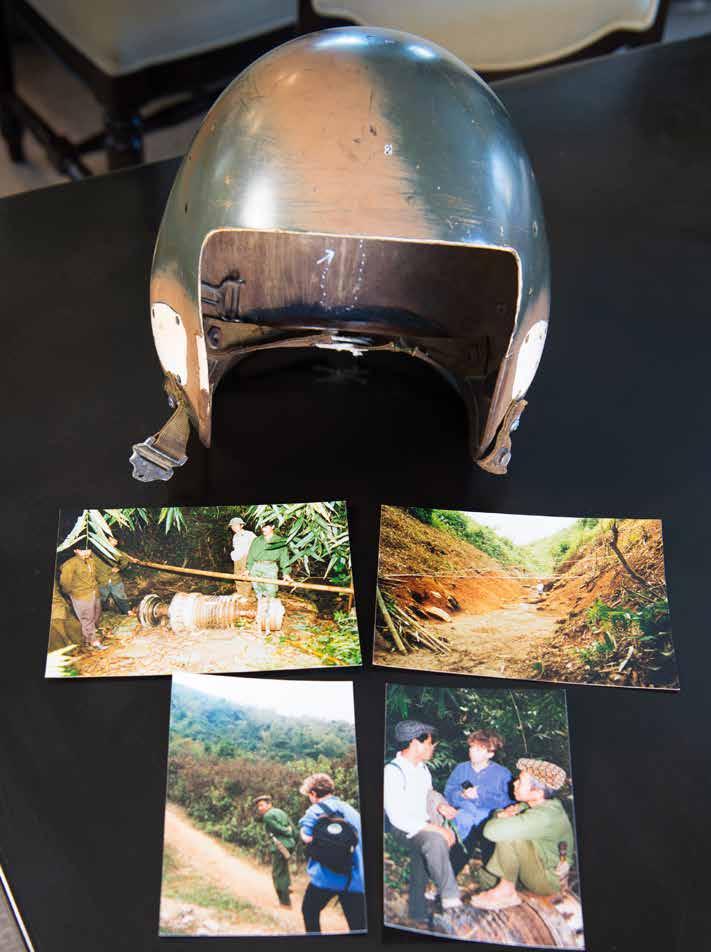
Lt. Col. Shine’s pilot helmet that Colleen Shine was given by the Vietnamese villager who guided her to the believed crash site, along with photos from her trip. The photo top right shows the recovery excavation which uncovered even more proof for the Shine family that Lt. Col. Shine had been found.



One of Bonnie Shine’s paintings hangs in daughter Colleen’s home. Bonnie painted and sold her artwork to help raise funds to support POW/MIA family organizations.















New book shares the little known story of the Vietnam War POW and MIA wives who fought for a full accounting and their loved ones’ return
Story by Alice Swan
Photos provided by Taylor Baldwin Kiland
It’s October 1969. The Vietnam War has been raging for 6 years, anti war sentiments are at a fever pitch and peace talks in Paris have been unsuccessful. Into this political firestorm march five brave military spouses, who have been fighting to get information on the fates of their husbands, who are listed as prisoners or missing in action. They have traveled to Paris to force a meeting with the North Vietnamese delegation.
As they wait in the rain outside the Democratic Republic of Vietnam’s office building, the women are strengthened by their unwavering love for their husbands and the bonds they’ve forged with each other. Will this be the day the women finally get the answers they’ve been seeking?
From Unwavering’s dramatic opening chapter detailing the story of this unprecedented trip to Paris until its final pages, authors Taylor Baldwin Kiland and Judy Silverstein Gray take readers along on the difficult, years-long struggle of the wives and family members who fought to ensure the return of the Vietnam War POWs and MIAs. It is a story many may not be familiar with, but the account of these wives’ resilience, faith and love will resonate with all who read Unwavering. Especially as the Department of Defense and the nation honors the sacrifices and contributions of military spouses during this month’s Military Spouse Appreciation observances.
Kiland, a former naval officer, explained that she and co-author Gray, a retired Coast Guard chief petty officer, approached this book as a love story. Having written several books about the experiences of Vietnam War POWs, Kiland said the former prisoners told her how focusing on the love of their families on the home front sustained them through their captivity. Learning about the steadfast love the women, and family members, exhibited through the tough years of separation led to the title, Unwavering.
But beyond the experiences of the POW/MIA wives, Unwavering provides fresh insights into the government and military strategy sessions on how to

deal with the captives and missing, and how this issue affected peace treaty negotiations. You’ll learn how the POW/MIA bracelets and flag were created and how the spouses and family members of POW/MIAs banded together to form their own lobbying group, the National League of Families, which is still fighting for a full accounting of our Vietnam War MIAs today.
Kiland recently shared some thoughts and background information about her book, and the impact the women featured in Unwavering had on DOD policies still in effect today.
First, what inspired you to write Unwavering?
I had written two other books about Vietnam War POWs, so I had amassed two decades worth of research on these men and their families. I had developed some deep relationships with them as well. About 9 years ago, Captain Dick Stratton, whose wife Alice is featured in the book, called and said, ‘there’s
been so much written about us, but much less written about the home front battle our families waged for us. There should be a book about that,’ and I told him he was right. So that set me off on the path of researching and writing this book and I recruited my friend Judy to assist me about a year into the project.
Reading the stories of these women, I felt I was with them at their kitchen table conversations, the meetings with DOD and government officials, and as they suffered alone. How were you able to bring such personal details into the book?

The POW/MIA wives who travelled to Paris would visit some of tourist sites near their hotel as they waited to meet with the North Vietnamese delegation. They were always followed by a contingent of international press and photographers.
It took extensive primary research and interviews with lots of the wives or with their children and other family members. It involved a lot of travel to go to the homes, and visiting various research institutions that housed the documents I needed. That included the Nixon Presidential Library, the Reagan Library… the Hoover Institute and the Library of Congress and National Archives. I also had access to a lot of earlier interviews the wives had given with documentary filmmakers, reporters or authors.
But to recreate the scenes and make the book as immersive as it is, we really did a lot of research, for example, on what their hotel rooms and the North Vietnamese delegation house looked like in Paris. We looked at the detailed notes the women wrote about their experiences. We also wrote in present tense, which is challenging to do when writing about something that happened more than 50 years ago. What were some surprises or important details that you and Judy learned in your research, interviews and writing process?
The biggest surprise was that the women were not aware of the tremendous impact they had on foreign policy and on our ‘leave no man behind’ policy. They recognized that they raised awareness of the POW/ MIA issue and rallied a nation and a president behind their cause. And that they achieved international recognition for the lobbying and publicity work they did. They met with anyone who could make some noise with the North Vietnamese. But what most of them did not recognize is how much they changed our foreign policy as it relates to missing men.
Can you briefly describe how their efforts changed the country’s handling of POWs/ MIAs since the Vietnam War?
Since Vietnam, we now go to the ends of the earth looking for missing and captive service members. We employ Special Forces to search for just one missing or captive man or woman. Before the Vietnam War, the nation’s policy was to leave our missing, missing. We have the U.S. Graves Registration which was responsible for identifying as many bodies as possible from war.
But we did not have an agency that was dedicated to searching for the remains from all wars. We just declared our MIAs dead about a year after hostilities ended. That was true after the World Wars and Korea. But since the Vietnam War we now have a dedicated agency, the Defense POW/MIA Accounting Agency, to repatriate remains. It was at the insistence of the wives and families that a permanent agency be created with the sole mission of looking for remains and identifying them.
What do you think today’s military spouses can learn from Unwavering and what do you hope everyone will take away from your book?
One thing I would like today’s military spouses to understand is that they have a lot more tools and services at their disposal today than a generation ago. I know some military spouses will still complain about

POW/MIA wives, (l-r) Carole Hansen, Louise Mulligan, Sybil Stockdale, Andrea Rander and Pat Mearns, meet with President Richard Nixon in 1969, to press for the release of prisoners and a full accounting of the Vietnam War’s missing be a part of treaty negotiations.
the lack of support they get but I think the military has really improved its support of military families. And that is a result of the work and experiences of the Vietnam War era wives.
I included the story of Alice Stratton [husband Dick Stratton was taken captive in 1967] because not only did she find her voice and become an advocate for her husband, she went on to become the first Deputy Assistant Secretary for Navy Family Support. She helped create the Navy Family Service Centers.
I also hope readers learn to never underestimate what an individual or a small group of people can do. These women had every obstacle in their way, and they were being told by the government not to do anything. They did not know if the efforts they undertook were going to harm or help their husbands, but they persevered.
Unwavering is available at your favorite book sites and stores. You can also go to www.unwaveringbook. com to see a schedule of book talk appearances and ordering links.

Pat Mearns, whose husband USAF Maj. Art Mearns had been shot down and imprisoned in Vietnam in 1966, mails a coded letter to her husband. Many of the POW wives were recruited by the Department of Defense on using special codes in letters in order to learn more about how prisoners were being treated and names of fellow captives.



The Oliver Hazard Perry Shipyard (OHPS), a nonprofit organization headquartered in Erie, Penn., has taken a huge step toward its goal of acquiring a modern Navy combat ship and opening it to the public as a museum ship. Phase 1 of preparations, which involved the Navy’s approval of OHPS’s request to apply for a ship, has now been completed.
Phase 2 has now commenced: a series of studies on the environmental, engineering, tourism, and economic impact of acquiring the USS Halyburton, a retired Perry-class Guided Missile Frigate. Lt. Sandra Rechis, USN (Ret.), who was the first female officer to serve aboard the Halyburton, now serves as an advisor to the OHPS, and gave her personal account of her experience on the ship and the importance of its future as a museum.

Rechis began her career in the Navy in July of 1991, enlisting after completing high school. Coming from a small town in Washington, Rechis was initially attracted to the Navy due to her desire to travel and “see the world.”
After eleven years of enlistment, Rechis became an officer and began her term on the Halyburton in January 2003. Her first role aboard the ship was as Assistant Operations Officer; she later filled various other roles, including Combat Information Center Officer, Damage Control Assistant, and Public Affairs Officer. Rechis’ responsibilities in these positions included “running the day-to-day programs and operations within combat,” monitoring information from electronic equipment, and managing communication with the crew.
She acknowledged the high level of importance of her
duties as Damage Control Assistant, remarking, “when you’re deployed, you can’t just call the fire department. You are the fire department!”
In her time on the Halyburton, Rechis achieved her goal of traveling the world, deploying to various locations such as Poland, Senegal, the Gibraltar Straits, the Suez Canal, Cuba, the Galapagos Islands, and Ecuador. Her most memorable experience on the ship was transiting the Panama Canal, which she called “absolutely amazing.”

But her journey was not without its fair share of challenges: as the first female officer to serve aboard the Halyburton, Rechis initially struggled to integrate with the crew. As she put it, “everybody was very set in their ways. . . there was a lot of getting used to having a female on board with an all-male crew.” However, due to her experiences during enlistment, she was “able to integrate quickly, and the camaraderie quickly grew.” Eventually, many of the sailors began to refer to her endearingly as the “mom of the ship.”
When Rechis found out two years ago that OHPS was planning to convert the Halyburton to a museum ship for the public, she knew she had to get involved. The Halyburton’s status as a Perry-class frigate gives it

a special importance to the history of Erie as well as the history of America’s Navy: the Perry-class frigates, as well as the OHPS, are named in honor of Oliver Hazard Perry, known as the “Hero of Lake Erie” for his leadership in the 1813 Battle of Lake Erie.
His bravery solidified the phrase “Don’t Give Up the Ship,” which was inscribed on his battle flag, as an icon of Naval history. Rechis’ personal experience with the Halyburton connects her with this history and makes her role as advisor essential to the preservation of the ship.
Part of her role as advisor is to assist in planning the route that visitors would take while exploring the ship. She explained that each part of the layout and design of the ship is intentional and serves a specific purpose, and it is vital that visitors are able to experience this layout in a way that reveals the rationale behind the engineering decisions.
On a museum ship, Rechis explained, “outside visitors can come in and see how we lived, how we ate, and

worked, and understand more about the military in general. Having the ship up there in Erie will bring that sense of pride and ownership to Veterans of that ship, or any other ship.”
Rechis emphasized the importance of Halyburton’s future status as the first, and only, modern Navy ship to be converted into a museum. Currently, all Navy museum ships are Vietnam-era or older, with the majority being World War II-era. The Halyburton was first commissioned in 1984 and remained in service until 2014.
Rechis believes that it is important for the public to understand how the Navy has evolved over time, and sees the Halyburton as the perfect way to send this message: “to see the evolution from battleships and old aircraft carriers to a modern-day combatant. . . there’s quite a difference.”
Although there is a long way to go before the Halyburton takes its place in Erie, Rechis eagerly awaits the day she and other veterans will once again be able to step aboard their beloved former home.


Story by Michael Reid
King Norris can still remember how it smelled when Agent Orange hit his nostrils while serving in Vietnam in the 1970s.
“Every night I went to work it was hard to breathe because of the fumes,” said Norris, who worked the night shift guarding the ammo dump with the 212th MP Company in Vietnam’s Long Bihn from 1970-1971. “I can’t describe it, it’s just unbelievable. It could knock a dragon out. I guess it was like sticking your head in a barrel of TNT.”
The Chaptico resident said he was officially diagnosed with having cancer caused by exposure to Agent Orange — a chemical defoliant that U.S. troops sprayed to kill foliage and prevent the enemy from making surprise attacks — in 2015 and received nine weeks of radiation along with much-needed disability payments.
“I have friends who are Vietnam vets and one friend [known as] Lone Wolf tells of walking through the jungle and suddenly there was no jungle where they had sprayed Agent Orange, and they had to walk through that to get to where they were going,” said King’s brother, Joe Norris, who worked for The Enterprise and other local newspapers. “They were all affected by it. I’m grateful because King got to live a lot longer than most of them
did. They’ve been gone, most of them, for 20, 25 years.”
King, 73, was also diagnosed with prostate cancer in 2014, and a year later determined it had been caused by exposure to Agent Orange. The cancer returned with a vengeance in 2020.
“My [prostate-specific antigen] number was so high they weren’t sure there was any hope for me at all,” King said.
In April 2023 he went to MedStar St. Mary’s Hospital in Leonardtown where a CT scan revealed a tumor in his bladder. King was put on a medication that he said cost him $15,000 a month, but his white blood count fell from 896 to 6.
Just before Christmas of last year, his back started hurting and he was told his vertebrae was swollen and was crimping his spinal column. He was flown to Georgetown University Hospital and given 10 shots of radiation.
“‘King, you’re dying,’” King said he was told by his doctor. “’Quit going to the emergency room, quit getting stents in, quit seeing doctors. There’s nothing anybody can do for you. You just have to accept it. I said, ‘I don’t want to accept it. I want to see my little great-granddaughter grow up.’”

King Norris stands with his sentry dog Red-Eye Snoopy on patrol guarding an ammo dump with the 212th MP Company in Vietnam’s Long Bihn in the early 1970s. The dog was called red-eye because of the color of his eyes when agitated.
But through it all King was also thinking of others. He regularly brings pizzas to the nurses at the Leonardtown hospital to thank them for all they do. A card signed by many of them sits on a table next to his chair in his camper home.
“I thought, ‘Well, I can’t do anything about COVID,’” he said, “’but I can feed them. They appreciate the food.”
When he returned to St. Mary’s County following his 9-month tour in Vietnam, King became a sheetrock plasterer and was even requested by name, but in 1979 his health issues began in earnest.
“My knees started burning like crazy 24/7,” King said. “It went through my body like a worm. Every joint, everything. It felt like a million spiders were crawling over my body.”
“People were all like, ‘It’s all in his head, it’s all in his head,’ because there didn’t seem to be anything medically wrong with him,” Joe said while seated next to his brother. “I was the one who said, ‘Look, you don’t know what that man went through.’ The stress alone of what he went through could be causing this. No matter what it is we have to stop acting like it’s nothing and rally... It was hard.”
Unfortunately, we received notice that King Norris passed away right before this edition went to the printer. We wanted to run the story as it was written in honor of his life and the countless other veterans who suffer or have suffered from Agent Orange.







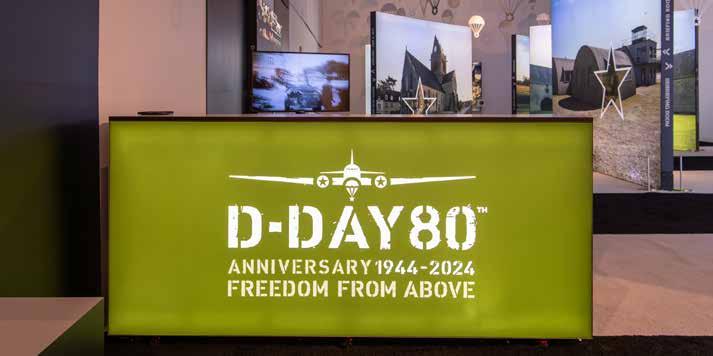
by Jeff Heeney
June marks the 80th anniversary of D-Day, which is being recognized across the region. This photo is from a special exhibit at the National Museum of the United States Army. At Ease will have several stories about that historic day next month!


We
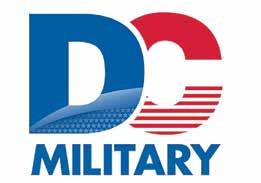
and
Our programs areTRICARE®-certified.

We areh erefor yo uw hen yo un eed help fo ryour child. Find out more to daybyc alling 703 -7 77-0800 or visit northspringleesburg.co m.






























